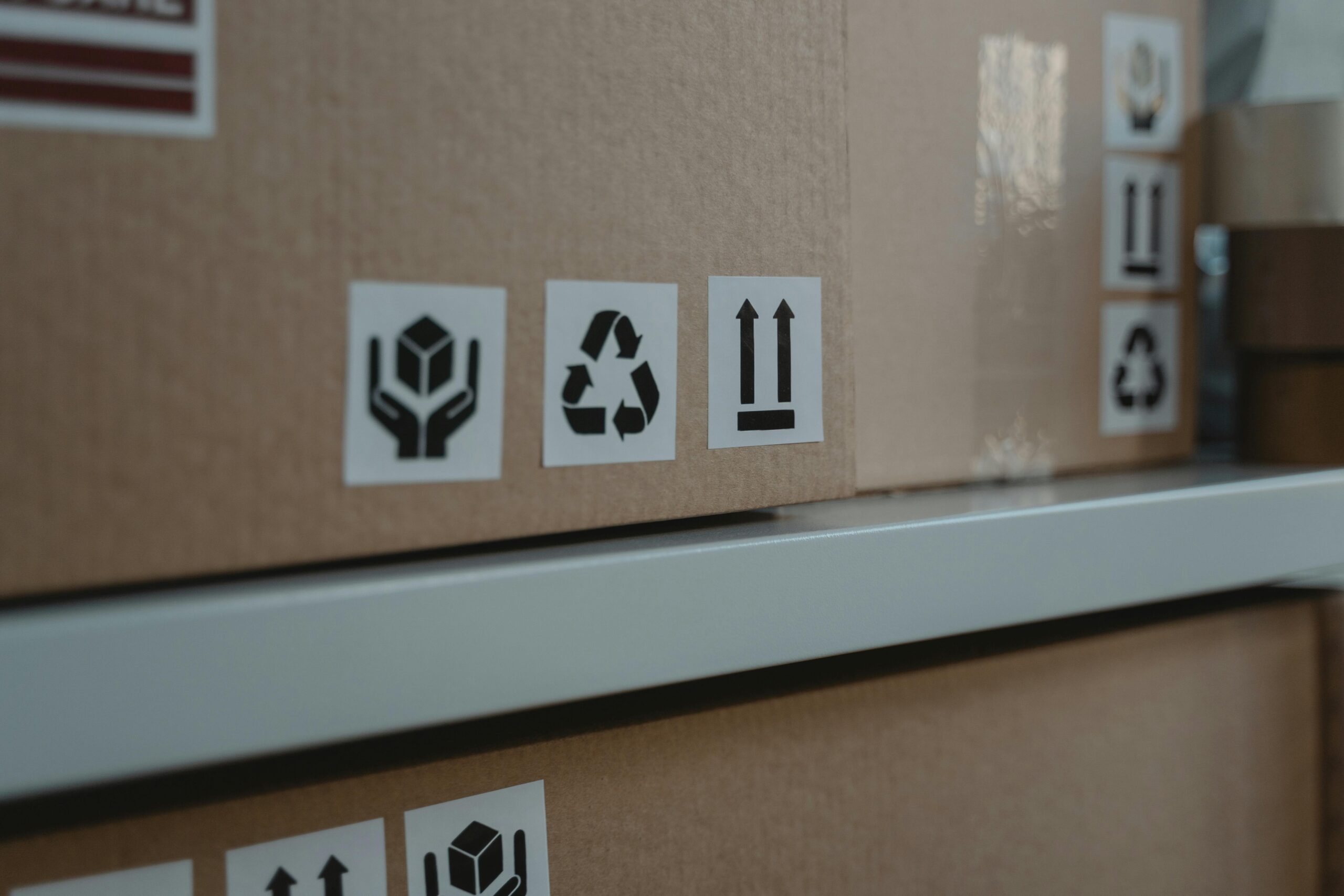5901 Botham Jean Blvd, Dallas, TX 75215
Why Are Recycling Guides Essential for Businesses?
May 7, 2025Did you know that businesses generate over 7.6 billion tons of industrial waste annually? Commercial entities produce significant amounts of waste that, when improperly managed, contribute to landfill overflow and environmental degradation. Recycling guides become invaluable tools for modern businesses in this context.
Recycling guides for businesses serve as comprehensive roadmaps to navigate waste management complexities. These documents provide clear directions on sorting materials, establishing collection systems, and implementing effective recycling protocols. They help organizations build sustainable waste practices while ensuring compliance with increasingly stringent commercial recycling regulations.
Beyond operational guidance, these resources offer businesses a structured approach to meeting legal obligations. As local and state governments implement mandatory commercial recycling laws, these guides help businesses understand specific requirements for different waste streams. They outline proper disposal methods for everything from paper and plastics to electronic waste and organic materials, helping companies avoid potential fines while contributing to environmental conservation efforts.
What resources are available in recycling guides for businesses?

Business recycling guides offer essential tools to help organizations establish effective waste management systems. These guides typically include downloadable brochures outlining the fundamentals of commercial recycling and regulatory requirements businesses must follow.
Visual resources feature prominently in most guides. High-quality posters illustrating proper sorting methods help employees identify which items belong in specific bins. Custom recycling labels clearly mark collection points throughout facilities, reducing confusion and contamination.
Many guides provide comprehensive toolkits with multiple components:
- Step-by-step implementation checklists
- Waste audit templates for baseline assessment
- Employee training materials
- Printable bin signage for common materials
- Program assessment tools to measure success
Educational resources address specific material streams that businesses commonly handle. Detailed guides exist for paper recycling, covering everything from office documents to cardboard packaging. Similar resources explain plastic recycling, focusing on identifying and separating different resin types.
For businesses focused on employee engagement, recycling guides offer communication templates and program launch materials. These resources help organizations announce new initiatives and maintain momentum through ongoing education campaigns.
Case studies represent another valuable resource found in many recycling guides. These real-world examples document successful program implementations across various industries, providing practical insights and proven strategies. They often include waste reduction metrics and return on investment calculations.
Digital resources have become increasingly common, with some guides offering online sign-making features. These tools allow businesses to create customized signage that addresses their specific waste streams and uses consistent messaging throughout their facilities.
For organizations seeking to integrate recycling into broader sustainability efforts, many guides include waste reduction planning templates. These documents help businesses move beyond basic recycling to implement comprehensive waste minimization strategies.
Some recycling guides also provide directories of local service providers, helping businesses connect with recycling collection companies, waste auditors, and equipment suppliers. These connections ensure organizations can quickly implement the strategies outlined in the guides.
| Resource | Description | Application |
|---|---|---|
| Business Recycling Toolkit | Comprehensive guide for businesses to set up recycling systems | Helps businesses minimize contamination and comply with regulations |
| Posters and Guides | Visual materials illustrating proper sorting methods | Educates employees on recycling practices |
| Recycling Labels | Custom labels for collection points | Reduces confusion and contamination |
| Implementation Checklists | Step-by-step guides for setting up recycling programs | Facilitates systematic program development |
| Waste Audit Templates | Tools to assess types and volumes of waste | Helps identify major waste streams |
| Employee Training Materials | Educational resources for staff | Ensures proper recycling practices |
| Case Studies | Examples of successful recycling programs | Provides insights and proven strategies |
How do recycling guides address specific business types and locations?
Recycling guides for businesses understand that waste streams differ significantly across industries. Cafes and restaurants handle large amounts of food waste, disposable packaging, and glass bottles, requiring specialized solutions. Office environments typically manage paper, cardboard, and electronic waste, needing different collection systems.
For restaurants and cafes, effective guides suggest clearly labeled bins for recyclables like paper, plastic, and glass. These businesses benefit from advice on composting food scraps, which often make up a major part of their waste. Some guides recommend partnering with local recycling facilities to ensure proper processing of materials unique to food establishments.
Office recycling guides focus on placement strategies, recommending bins in high-traffic areas such as kitchens, break rooms, and near printers. Office-specific advice often highlights the importance of clear signage with text and visual cues to improve compliance. Consistent bin design, color coding, and labeling across office locations enhance participation and reduce contamination.
Location-specific guidelines address regional recycling regulations that can vary greatly between municipalities. What’s accepted for recycling in one city might be rejected in another. These guides outline local processing capabilities, collection schedules, and specific material requirements. This geographical focus ensures businesses comply with local ordinances and maximize the diversion of recyclable materials.
Industry-specific guides also recognize the unique operational challenges each sector faces. For instance, cafes may receive advice on handling coffee grounds separately, restaurants might get guidance on managing grease properly, and offices could receive recommendations for recycling printer cartridges and electronic equipment. These tailored approaches make recycling more practical and achievable within each business’s workflow.
Successful recycling programs extend beyond just setting up bins. They include comprehensive staff training that addresses the specific challenges of each business type. Restaurant staff need different recycling knowledge than office workers. Regular updates keep employees informed about program progress and any changes to local recycling requirements or capabilities.
The most effective guides emphasize monitoring and adjustment as critical components. They recommend tracking recycling rates and contamination levels to assess program effectiveness. This data-driven approach allows businesses to make targeted improvements based on their specific operational patterns and challenges rather than applying generic solutions.
What are the key components of an effective business recycling program?

An effective business recycling program requires careful planning and implementation to maximize waste diversion and minimize costs. A structured approach ensures businesses create sustainable programs that yield measurable results. The essential components below form the foundation of successful recycling initiatives.
Core Implementation Steps for Business Recycling
A step-by-step methodology helps organizations systematically develop their recycling program. Each step builds upon the previous one to create a comprehensive waste management system.
- Obtain management support – Secure leadership commitment before proceeding. Tip: Present potential cost savings from reduced disposal fees to gain executive buy-in.
- Appoint a dedicated recycling coordinator – Designate someone responsible for planning and managing the program. Tip: Choose an enthusiastic person with strong communication skills who can engage with different departments.
- Form a green team – Assemble representatives from various departments to help plan and implement the program. Tip: Include facilities management, operations, and employee representatives to ensure diverse perspectives.
- Conduct a waste audit – Assess the types and volumes of waste your business generates. Tip: Track waste for at least one week to identify patterns and major waste streams.
- Identify recyclable materials – Determine which materials appear in largest volumes and have available recycling markets. Tip: Start with high-volume materials like cardboard and paper before expanding to other items.
- Select a reliable recycling service provider – Research vendors who will collect your materials at competitive rates. Tip: Ask potential vendors about their contamination policies and what happens to materials after collection.
- Determine collection logistics – Design a collection system tailored to your facility’s layout and operations. Tip: Place recycling bins next to trash containers to make recycling as convenient as discarding waste.
- Implement the program – Launch the program with proper equipment and clear procedures. Tip: Consider a phased approach, starting with one or two materials before expanding.
- Educate employees – Provide training on what can and cannot be recycled. Tip: Create simple visual guides showing acceptable items for each collection bin.
- Reap public relations benefits – Communicate your environmental efforts to stakeholders. Tip: Share recycling success stories in company newsletters and social media.
- Monitor, evaluate, and refine – Track program performance and make adjustments as needed. Tip: Set specific diversion rate targets and celebrate when they are achieved.
The most successful recycling programs focus first on high-volume materials like old corrugated cardboard (OCC), which typically constitutes 30-40% of a business waste stream. Many companies start with cardboard recycling and use the cost savings to fund program expansion to other materials.
Effective programs also emphasize proper employee education and convenient collection systems. Studies show that business recycling programs with the highest participation rates are characterized by ease of participation and clear communication of procedures.
| Step | Description |
| Obtain management support | Secure leadership commitment and present potential cost savings from reduced disposal fees. |
| Appoint a dedicated recycling coordinator | Designate someone responsible for planning and managing the program. |
| Form a green team | Assemble representatives from various departments to help plan and implement the program. |
| Conduct a waste audit | Assess the types and volumes of waste your business generates. |
| Identify recyclable materials | Determine which materials appear in largest volumes and have available recycling markets. |
| Select a reliable recycling service provider | Research vendors who will collect your materials at competitive rates. |
| Determine collection logistics | Design a collection system tailored to your facility’s layout and operations. |
| Implement the program | Launch the program with proper equipment and clear procedures. |
| Educate employees | Provide training on what can and cannot be recycled. |
| Reap public relations benefits | Communicate your environmental efforts to stakeholders. |
| Monitor, evaluate, and refine | Track program performance and make adjustments as needed. |
Collection System Logistics
The collection system forms the backbone of any recycling program. A properly designed system makes recycling convenient while minimizing contamination issues.
For collection bins, businesses should provide clearly marked receptacles in convenient locations. The bins should look distinctly different from regular trash containers. Based on waste audit results, companies should order appropriately sized containers to prevent overflow and reduce the frequency of emptying.
Central storage areas serve as consolidation points where recyclables from throughout the facility are gathered before pickup. Many businesses use large storage bins located in loading docks for easy vendor access. For cardboard recycling, balers or compactors may be necessary to manage high volumes efficiently.
Transporting recyclables from collection points to storage areas can be integrated into existing waste collection systems. Custodial staff can collect recyclables simultaneously with trash using separated bins. The key is keeping recyclables separate from other waste to prevent contamination.
Regular monitoring helps identify issues early. Tracking metrics such as diversion rates, cost savings, participation levels, and contamination provides valuable insights for program refinement. Successful programs continuously evaluate and adjust their approach to improve outcomes and adapt to changing conditions.
Conclusion: Maximizing the benefits of recycling guides for your business
Recycling guides are essential tools for businesses committed to sustainable waste management. These resources provide structured frameworks that help companies minimize environmental impact while realizing tangible business benefits. Properly implemented recycling programs reduce waste sent to landfills and help businesses meet increasingly stringent regulatory requirements. The economic advantages are equally compelling, as companies can achieve significant cost savings through reduced disposal fees and potentially generate revenue from recyclable materials.
Creating a comprehensive recycling program based on established guidelines also strengthens corporate social responsibility initiatives. Today’s stakeholders—from consumers to investors—actively seek businesses that demonstrate environmental stewardship. By implementing effective recycling practices, your business can enhance its reputation while contributing to resource conservation and sustainability goals.
Contact Okon Recycling at 214-717-4083 to develop a tailored recycling program that maximizes these benefits for your business.
